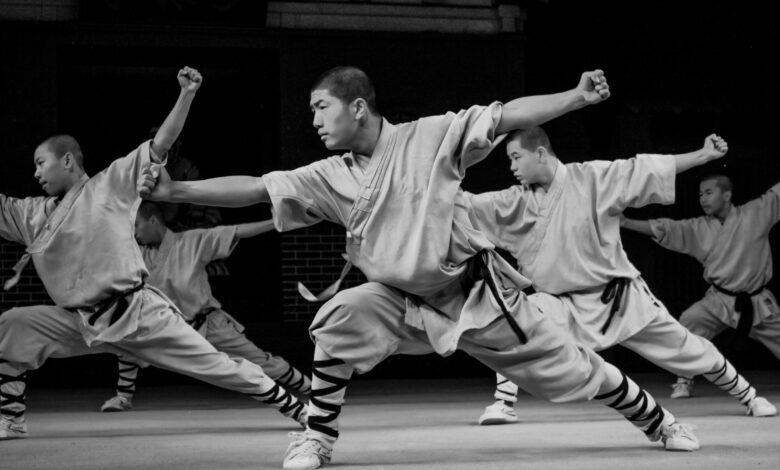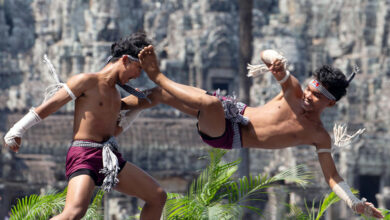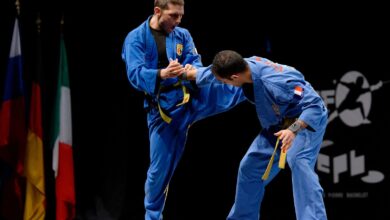
Martial Arts: Nanquan (南拳), meaning “Southern Fist,” is a dynamic and powerful martial art originating from southern China. Known for its strong stances, explosive movements, and practical combat techniques, Nanquan has influenced many traditional and modern martial arts. Unlike the softer and more fluid styles of northern China, Nanquan emphasizes short-range power, low stances, and aggressive strikes.
History and Origins
Nanquan traces its roots to the Ming and Qing dynasties, with influences from various regional martial arts practiced in southern China, particularly in Guangdong, Fujian, and Guangxi provinces. It developed as a practical fighting system used by civilians, military forces, and secret societies. Some of the most well-known styles within Nanquan include:
- Hung Gar (洪家) – Characterized by deep stances, powerful punches, and strong breathing techniques.
- Choy Li Fut (蔡李佛) – A combination of circular movements, rapid strikes, and fluid transitions.
- Wing Chun (詠春) – A close-combat system focusing on efficiency, centerline control, and rapid hand techniques.
- Fujian White Crane (福建白鶴拳) – Emphasizing evasive movements, rapid strikes, and internal energy.
The Southern Shaolin Temple played a significant role in the development of Nanquan, where monks and warriors refined techniques to combat invaders and enforce justice. Over time, Nanquan evolved into various family styles and was passed down through generations.
Characteristics and Techniques
Nanquan is distinguished by several key characteristics that make it unique among Chinese martial arts:
- Strong, Rooted Stances: Deep stances such as the horse stance (馬步), bow stance (弓步), and cat stance (虛步) provide a stable foundation for power generation.
- Explosive Power (Fa Jin, 發勁): Techniques are executed with sudden bursts of energy, allowing for devastating strikes.
- Hand Techniques: Nanquan utilizes a variety of punches, palm strikes, and claw techniques. Common movements include the tiger claw (虎爪), phoenix eye fist (鳳眼拳), and whipping punches.
- Short-Range Combat: Unlike Northern styles that rely on long-range kicks, Nanquan focuses on close-quarters combat with fast, powerful strikes.
- Breathing and Qi Cultivation: Controlled breathing methods enhance power and endurance, often accompanied by vocalized shouts (氣聲) to intimidate opponents and release internal energy.
Forms (Taolu) and Training Methods
Traditional Nanquan training consists of:
- Hand Forms (拳法 Taolu): These are prearranged sequences of movements that teach fundamental techniques, combat applications, and body mechanics. Famous Nanquan forms include “Tiger Crane Double Form” (虎鶴雙形拳) and “Iron Wire Fist” (鐵線拳).
- Weapons Training: Many Nanquan styles incorporate weapons such as the Southern broadsword (南刀), butterfly swords (蝴蝶雙刀), and the staff (棍).
- Two-Person Drills: Partner training helps practitioners refine reflexes, timing, and combat applications.
- Conditioning Exercises: Iron Palm training and stance endurance exercises build strength, resilience, and striking power.
Philosophy and Application
Beyond physical techniques, Nanquan embodies a deep philosophy rooted in Chinese martial traditions:
- Discipline and Hard Work: Training requires dedication and perseverance to master fundamental skills.
- Balance of Hard and Soft: While Nanquan emphasizes power, it also incorporates internal principles like controlled breathing and fluid transitions.
- Self-Defense and Combat Effectiveness: Originally developed for real-world fighting, Nanquan remains practical for self-defense and modern combat sports.
- Spiritual and Mental Growth: Many practitioners view martial arts as a path to self-improvement, emphasizing focus, respect, and moral integrity.
Nanquan in Modern Times
Today, Nanquan is practiced worldwide as both a traditional martial art and a competitive sport. In Wushu competitions, a standardized Nanquan routine features dynamic movements, aerial techniques, and theatrical expressions to showcase skill and athleticism. Additionally, many self-defense programs incorporate Nanquan techniques for practical street applications.
Martial arts schools continue to preserve and evolve Nanquan, ensuring its legacy for future generations. With its rich history, explosive power, and deep philosophy, Nanquan remains a vital part of the martial arts world.
Nanquan (Southern Fist) represents the strength and resilience of Chinese martial arts. With its powerful strikes, rooted stances, and practical combat applications, it continues to inspire martial artists across the globe. Whether for self-defense, health, or personal growth, Nanquan offers a profound journey into the art of combat and discipline.



